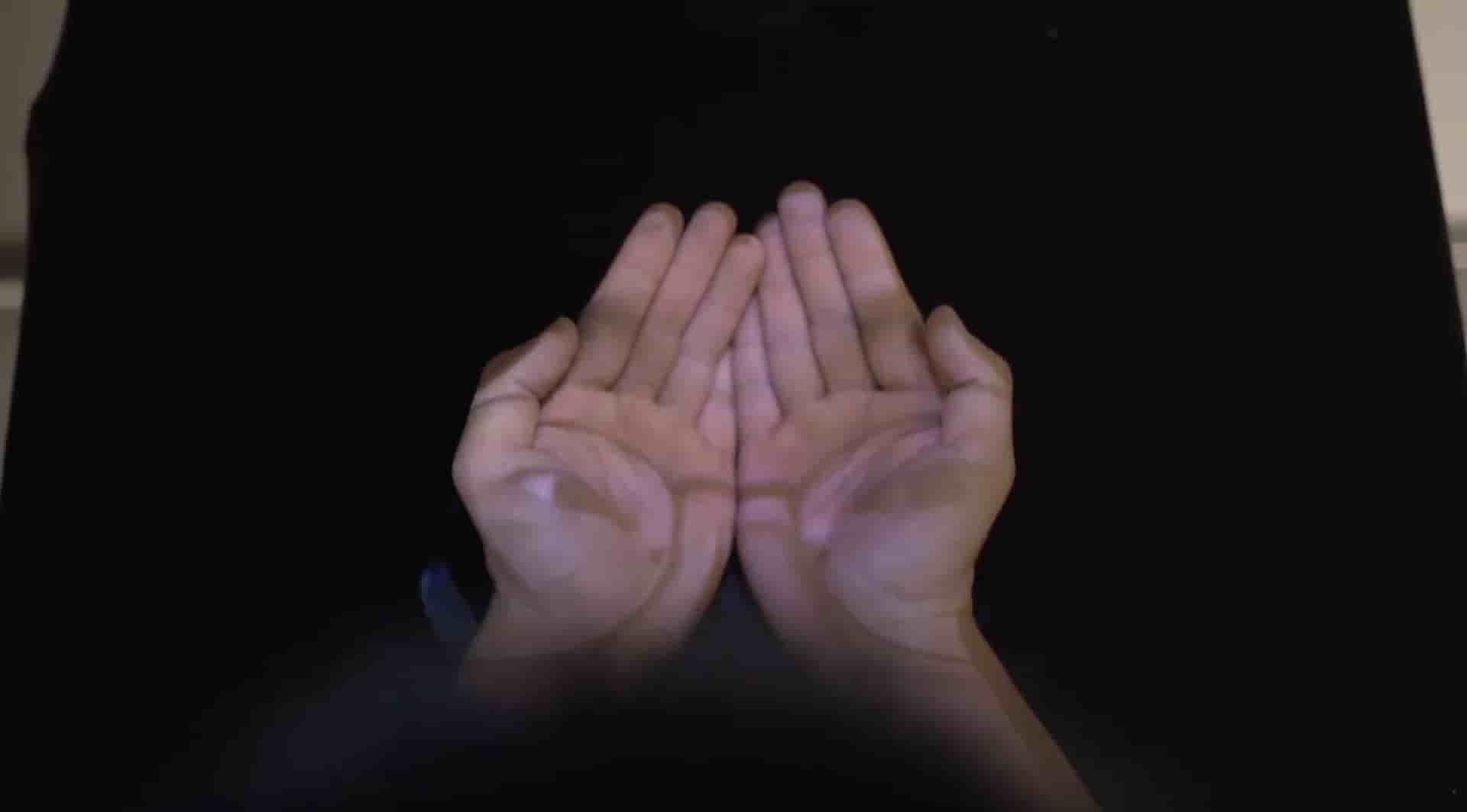An interactive installation exploring digital reflection and self-perception through real-time video manipulation. Drawing inspiration from Daniel Rozin's mechanical mirrors series, this piece reimagines the concept of reflection by projecting the audience's face onto their own palms, creating an intimate and surreal interaction between self-image and physical gesture.
Concept
Face Palm explores the intersection of body, identity, and digital reflection. While traditional mirrors and digital displays create a separation between viewer and reflection, this installation collapses that distance by turning the viewer's own hand into a canvas for their face. The work builds upon the legacy of interactive mirrors in media art—pioneered by artists like Daniel Rozin with his Mechanical Mirrors series (1999-present)—but introduces a uniquely intimate twist by using the human body itself as the reflective surface.
The palm, being both a part of our body and a tool for touch and manipulation, serves as a perfect metaphor for our relationship with self-image in the digital age. As viewers move their hands, they literally hold, shape, and distort their own face, creating a playful yet profound commentary on self-perception and digital embodiment.
Implementation
The installation utilizes Processing and OpenCV to process dual real-time camera feeds, creating a digital mirror system reminiscent of Rozin's "Software Mirrors" series but with a unique bodily interface. One camera captures facial features while the other tracks palm positioning, creating a synchronized video-mirror system.
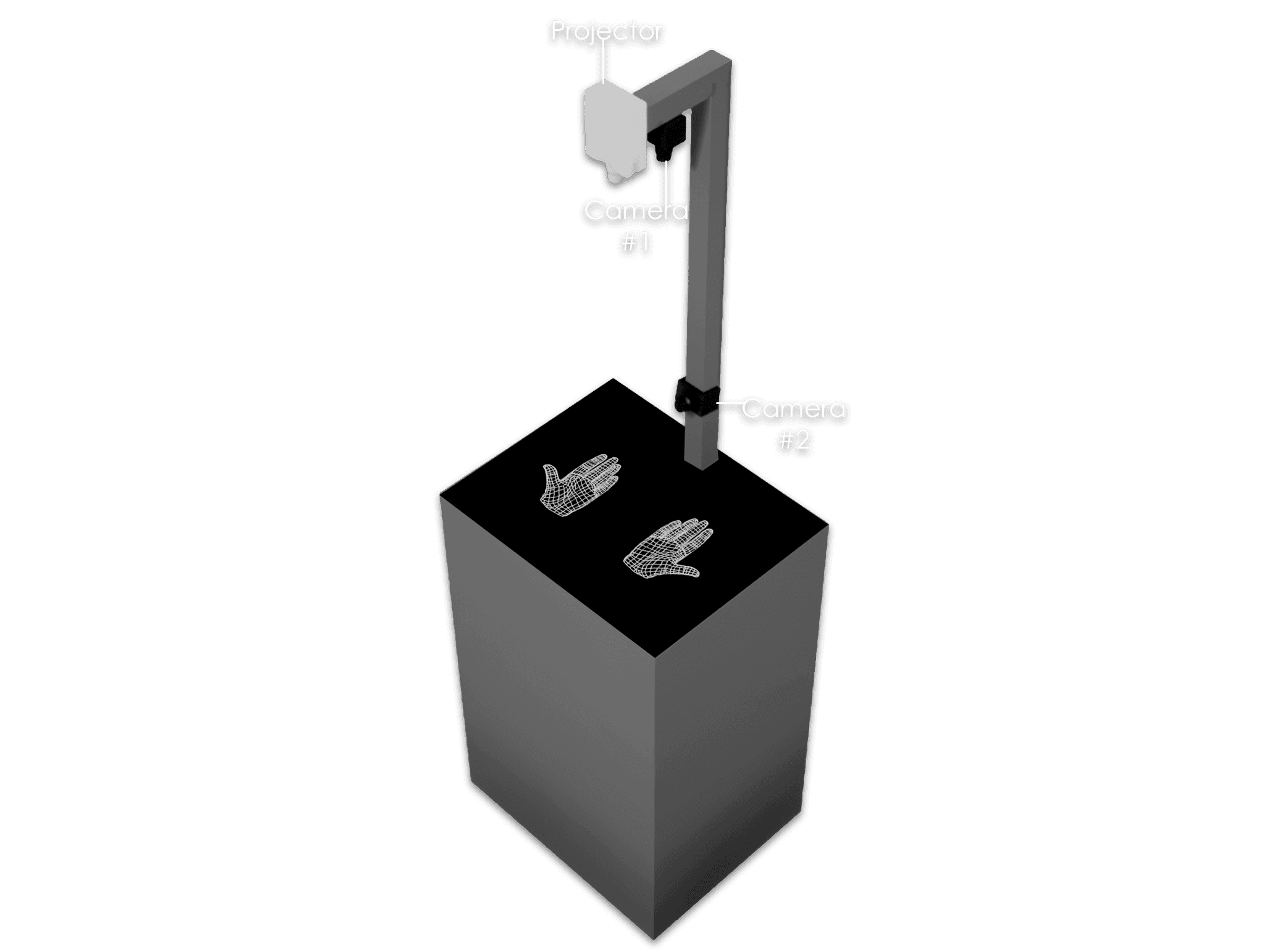
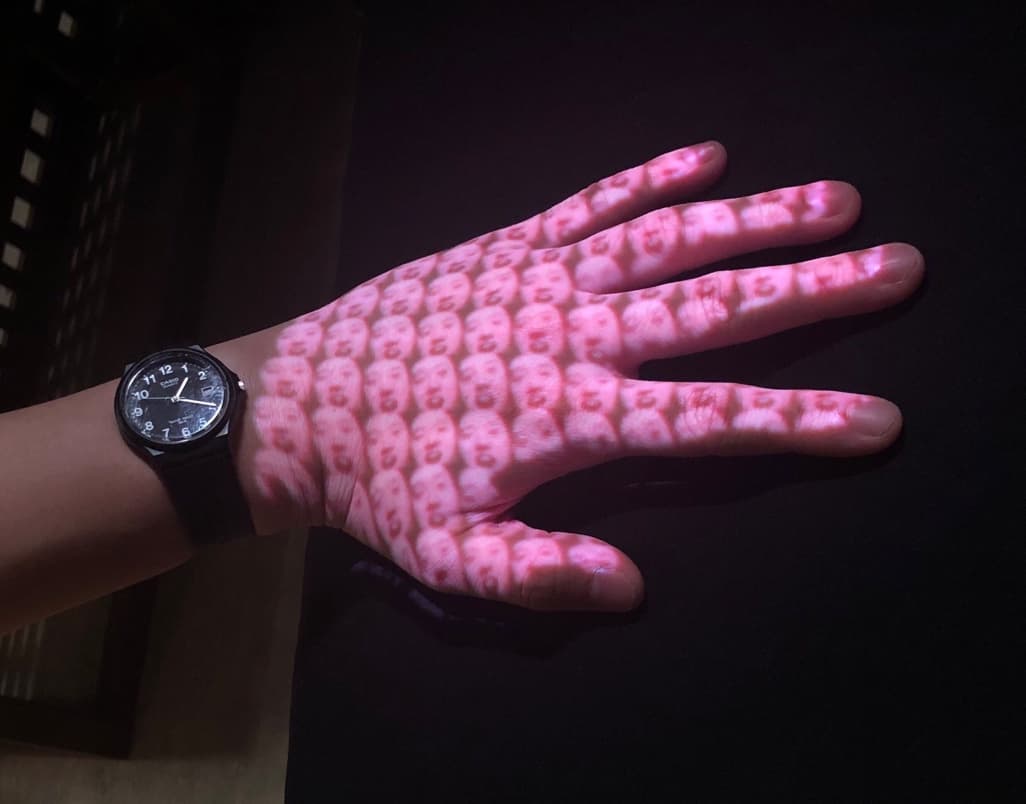
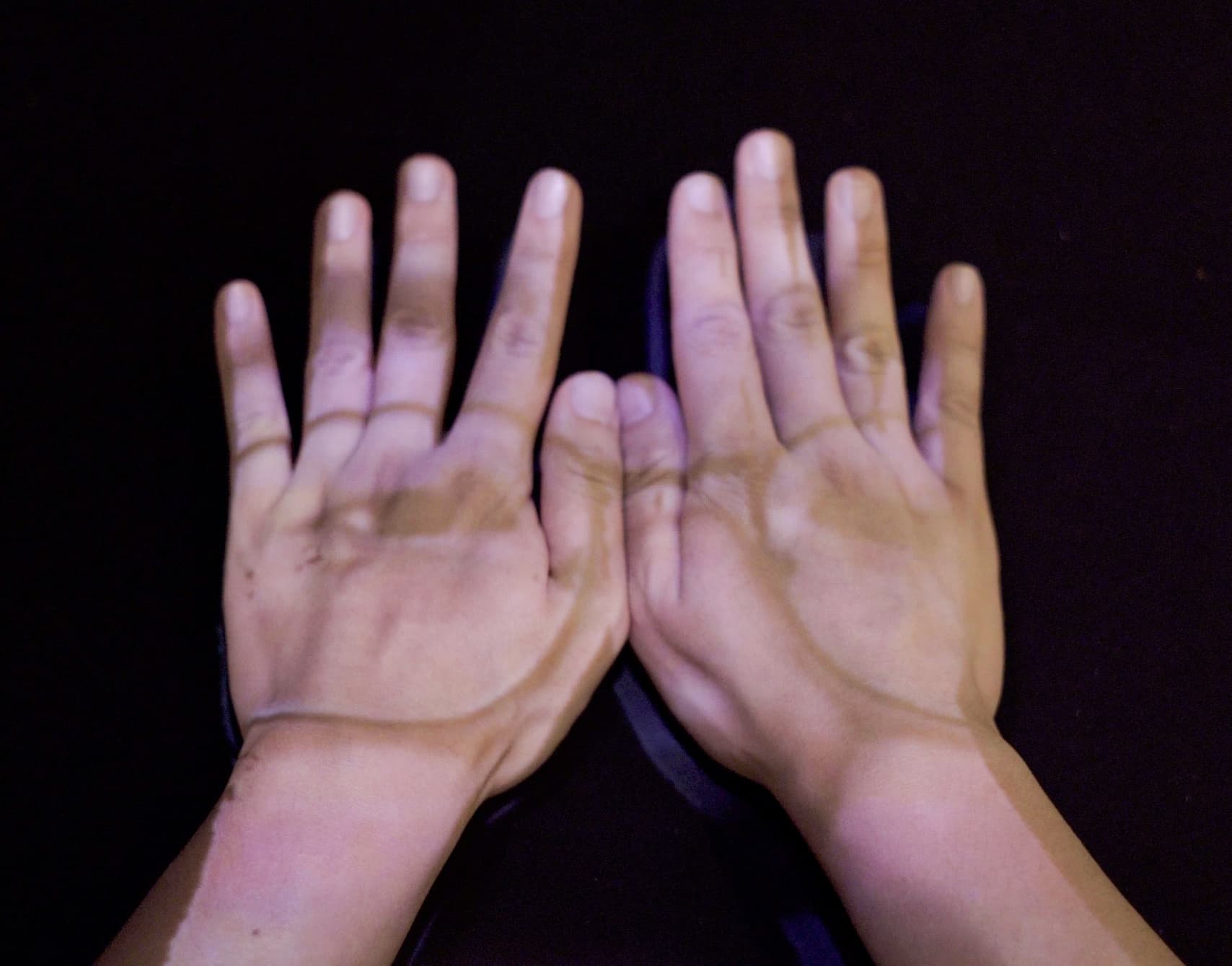
Exhibition
2019, Future Lab, West Bund Art Center, Shanghai
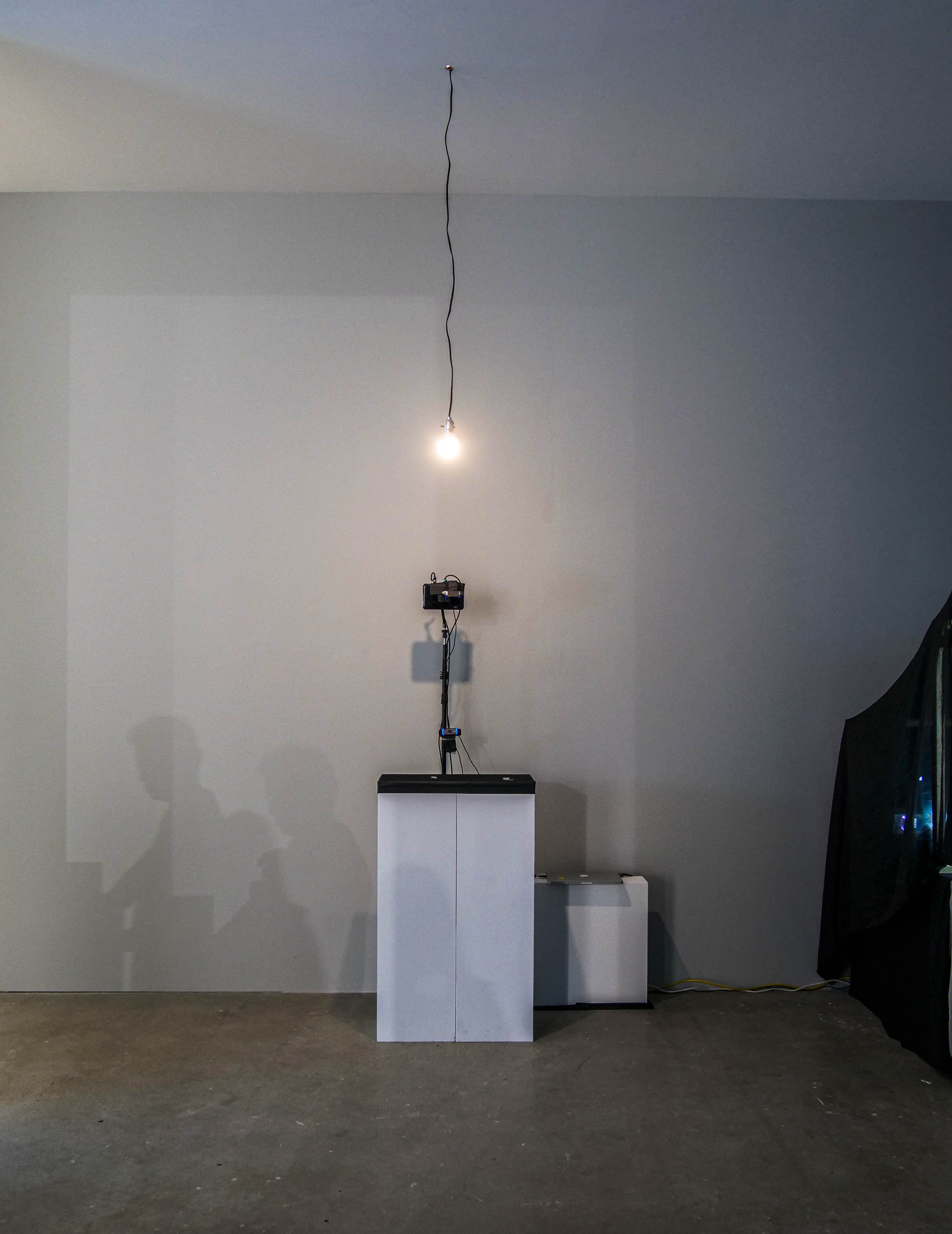
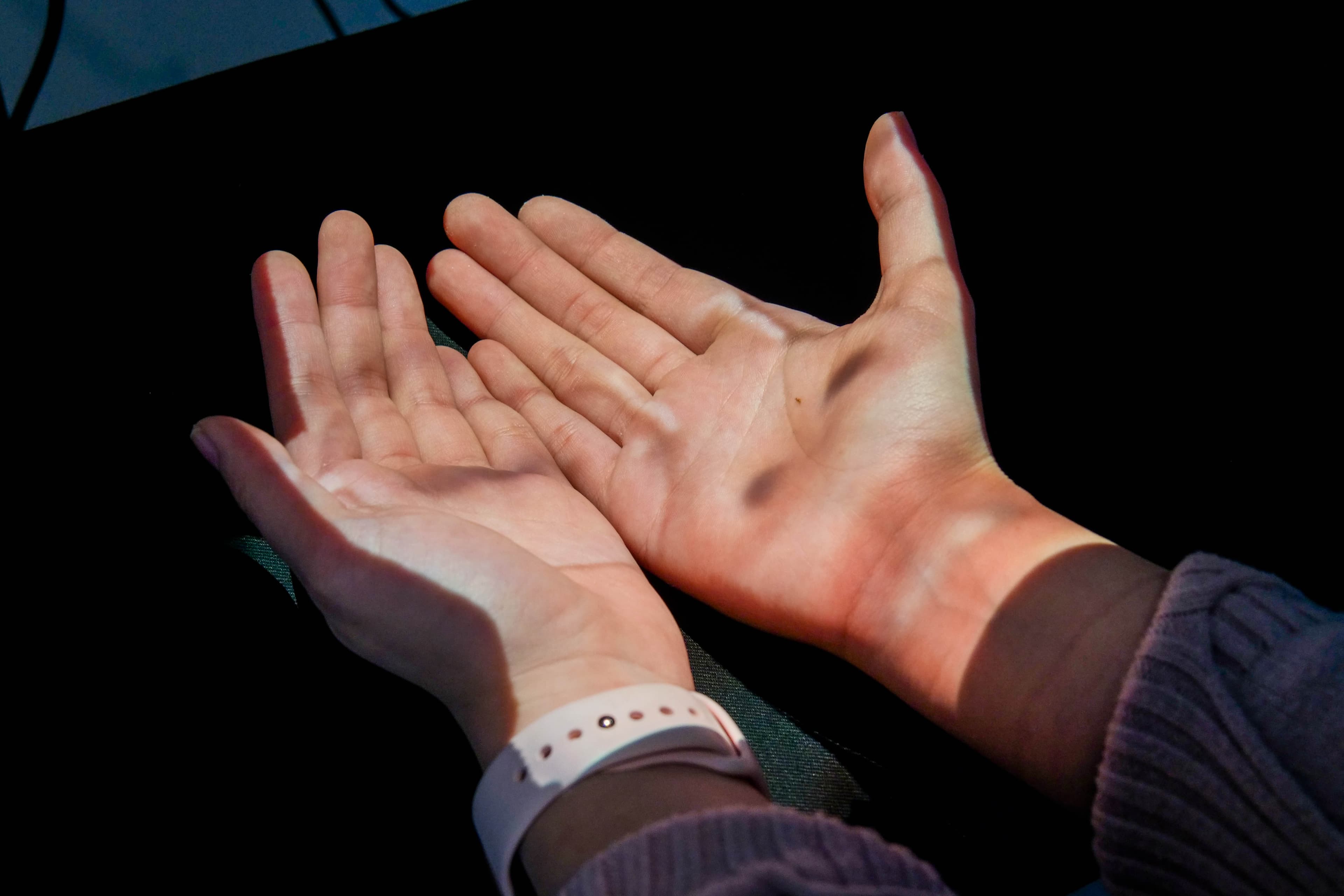
Acknowledgement
This work is completed under the course Sensors, Body, & Motion taught by Aaron Sherwood at NYU Abu Dhabi.
